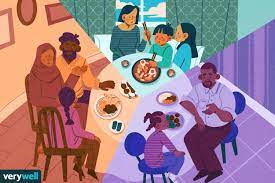Exploring the Rich Tapestry of Cultural Diversity
Culture is the vibrant thread that weaves together the fabric of humanity. It encompasses our beliefs, traditions, arts, languages, and ways of life. It is an intricate tapestry that reflects the unique identities and experiences of different communities across the globe. In this article, we delve into the importance of cultural diversity and celebrate its beauty.
Cultural diversity serves as a testament to our collective human heritage. Each culture brings forth a distinct set of customs, rituals, and values that have evolved over centuries. From indigenous tribes preserving ancient traditions to bustling metropolises embracing modernity while cherishing their roots, every culture has something invaluable to offer.
One of the key benefits of cultural diversity lies in its ability to foster mutual understanding and respect among people from various backgrounds. By embracing different cultures, we gain insights into alternative perspectives on life, broadening our horizons beyond our own limited experiences. This exposure helps break down stereotypes and prejudices, paving the way for empathy and compassion.
Moreover, cultural diversity fuels creativity and innovation. When individuals from diverse backgrounds come together, they bring with them a wealth of knowledge and ideas shaped by their unique cultural lenses. This melting pot of perspectives can lead to groundbreaking discoveries in fields such as art, science, technology, and business.
Cultural diversity also plays a vital role in preserving heritage and ensuring its continuity for future generations. Through language preservation efforts or the safeguarding of intangible cultural practices like dance or storytelling, communities can pass down their rich traditions from one generation to another. This transmission not only strengthens cultural identity but also helps maintain a sense of belonging within communities.
In an increasingly interconnected world where globalization is rapidly transforming societies, it is crucial to protect and promote cultural diversity. Governments play a significant role by implementing policies that support minority languages or by investing in cultural institutions that preserve heritage sites or artifacts.
On an individual level, we can contribute to the preservation of cultural diversity by actively engaging with different cultures. This can be done through attending cultural festivals, visiting museums and art exhibitions, or simply engaging in meaningful conversations with people from different backgrounds. By embracing cultural diversity, we become ambassadors of unity and understanding.
In conclusion, cultural diversity is a treasure that should be celebrated and nurtured. It enriches our lives, enhances our understanding of the world, and strengthens the bonds that connect us as human beings. Let us embrace the beauty of cultural diversity and work together to create a harmonious global society that values and respects the richness of all cultures.
Frequently Asked Questions about Cultural: Definitions, Synonyms, Examples, and Terminology
- What do you mean of cultural?
- What is a synonym for the word cultural?
- What is an example of cultural?
- What is called cultural?
What do you mean of cultural?
Culture refers to the shared beliefs, values, customs, behaviors, and artifacts that characterize a particular group of people or society. It encompasses various aspects of human life, including language, religion, traditions, art forms, social norms, and practices. Culture provides individuals with a sense of identity and belonging within a community and shapes their worldview and behavior. It is influenced by historical events, geographical factors, social interactions, and generational transmission. Cultural diversity refers to the presence of multiple cultures within a society or across the world.
What is a synonym for the word cultural?
A synonym for the word “cultural” is “ethnic.”
What is an example of cultural?
One example of cultural diversity can be seen in the celebration of traditional festivals around the world. For instance, Diwali, also known as the Festival of Lights, is a significant cultural event celebrated by millions of Hindus, Sikhs, and Jains worldwide. During Diwali, families come together to light oil lamps, decorate their homes with vibrant colors and rangoli patterns, exchange gifts, and indulge in delicious traditional sweets. The festival represents the triumph of light over darkness and good over evil. It showcases the distinct customs and traditions that have been passed down through generations and highlights the rich cultural heritage of South Asia. Diwali is just one example among countless cultural celebrations that serve as a testament to the diversity and beauty of our world.
What is called cultural?
Cultural refers to anything related to the beliefs, customs, traditions, arts, languages, and overall way of life of a particular group or society. It encompasses the shared practices and values that shape the identity and behavior of individuals within a community. Cultural aspects can include music, dance, literature, cuisine, clothing styles, religious rituals, social norms, and more. It is through culture that people express their unique perspectives and experiences, passing them down from one generation to another. Cultural diversity refers to the variety of different cultures coexisting within a larger society or across the world.

